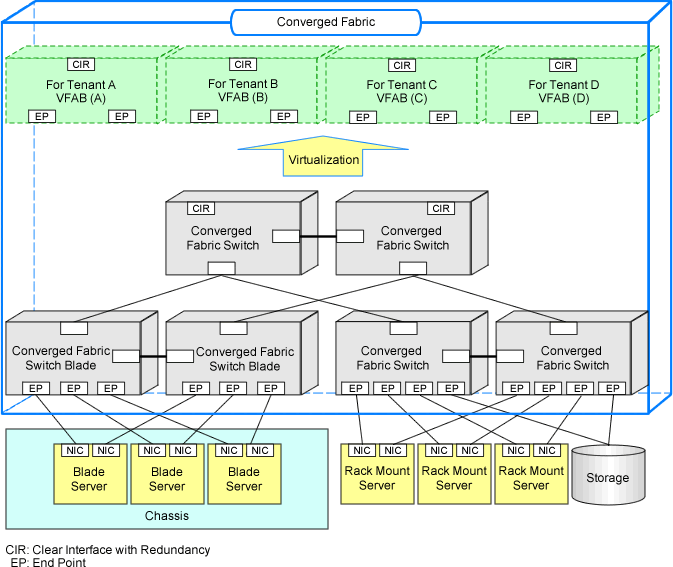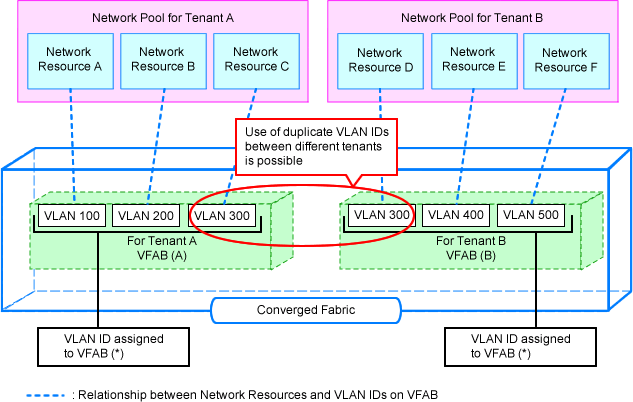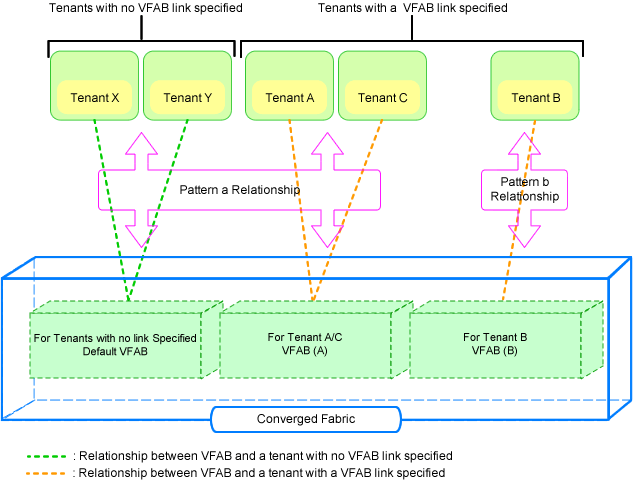As one function of Converged Fabrics, there is a function to divide a single Ethernet Fabric into multiple virtual Ethernet Fabrics for management purposes. Divided virtual Ethernet Fabrics are referred to virtual fabrics (VFAB).
In Resource Orchestrator, virtual fabrics can be linked with tenants.
Figure H.2 Linking Virtual Fabrics with Tenants

When using virtual fabrics, VLAN IDs are managed independently for each virtual fabric. This means that the same VLAN IDs can be used for different virtual fabrics. Therefore, the same VLAN IDs can be used for tenants linked with different virtual fabrics.
Figure H.3 Relations between Virtual Fabrics and VLAN IDs

*: VLAN ID guarantees uniqueness within a VFAB.
Relations between Tenants and Virtual Fabrics
The following two patterns are supported for the relations between tenants and virtual fabrics.
Multiple tenants correspond to a single virtual fabric
A single tenant corresponds to a single virtual fabric
For either pattern, it is necessary to specify the relations between virtual fabrics and tenants. When using a tenant which has no relations to virtual fabrics, it is considered that the tenant has relation to the default VFAB. The default VFAB is regarded as pattern a. above.
For details on relationships between tenants and virtual fabrics, specify the network configuration information (XML definition) when registering network devices.
For details on the specification method, refer to "15.6.1 Creating" in the "Reference Guide (Command/XML) CE".
Figure H.4 Relations between Tenants and Virtual Fabrics

Relations between Pools and Virtual Fabrics
Network resources belonging to the global pool can be shared with multiple tenants, and they are not dedicated to any specific tenants. Therefore, the network resources belonging to the global pool are regarded as corresponding to the default VFAB.
The following indicates the network resources corresponding to the default VFAB.
Network resources belonging to the network pool of the global pool
Network resources belonging to the network pool of a tenant which has no relations to any VFABs.
All tenants corresponding to the default VFAB can share the network resources in the global pool. Other tenants cannot share them.
Figure H.5 Relations between Pools and Virtual Fabrics

*: VLAN ID guarantees uniqueness within a VFAB.